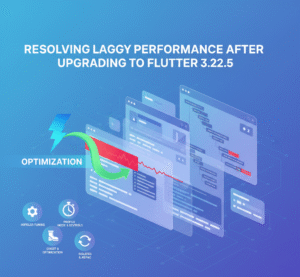Flutter has emerged as a powerful cross-platform framework for building mobile applications, but how does it perform when developing complex, industry-level applications like Text-to-Speech (TTS) solutions? In this article, I’ll share real-world insights from building a sophisticated TTS application with Flutter, highlighting both the advantages and challenges encountered along the way.
The Flutter Advantage for Industry Applications
1. Cross-Platform Efficiency
One of Flutter’s most significant advantages is its ability to maintain a single codebase for multiple platforms. When developing our TTS application:
– We achieved approximately 95% code sharing between iOS and Android versions
– Development time was reduced by an estimated 40% compared to native development
– UI consistency across platforms eliminated the need for platform-specific design adjustments
2. Rich Widget Library and Customization
Flutter’s comprehensive widget library proved invaluable for our TTS application:
– Custom audio playback controls were built using Flutter’s animation capabilities
– Text highlighting during speech playback was implemented with custom painting
– Accessibility features were easily integrated using Flutter’s semantic widgets
3. Performance for Audio Processing
Contrary to some concerns about Flutter’s performance for intensive tasks:
– The Dart FFI (Foreign Function Interface) allowed us to integrate native C/C++ audio processing libraries
– Audio playback latency was comparable to native implementations
– Background processing for TTS generation maintained smooth UI responsiveness
4. Developer Productivity
The Flutter ecosystem significantly enhanced our development workflow:
– Hot reload accelerated UI iterations and bug fixes
– Strong typing and null safety in Dart prevented numerous potential runtime errors
– Comprehensive testing tools allowed for robust unit and widget testing
Real Challenges and Limitations
1. Plugin Ecosystem Maturity
While Flutter’s plugin ecosystem is growing, we encountered several challenges:
– Some advanced TTS features required custom plugin development
– Audio processing plugins occasionally had platform-specific inconsistencies
– Plugin updates sometimes lagged behind platform OS updates, requiring temporary workarounds
2. Native Integration Complexity
Integrating with platform-specific TTS engines presented challenges:
– Platform channels added complexity when working with large audio datasets
– Debugging native integration issues required platform-specific knowledge
– Performance optimization required understanding of both Flutter and native platform behaviors
3. Advanced Audio Handling
Building a professional TTS application revealed some Flutter limitations:
– Low-level audio buffer manipulation required platform-specific code.
– Complex audio visualizations needed careful optimization to maintain performance
– Background audio processing required platform-specific implementations for best performance
4. Enterprise Integration Challenges
Integrating with enterprise systems presented additional hurdles:
– Custom authentication flows sometimes required platform-specific implementations
– Secure storage of voice data needed careful implementation across platforms
– Enterprise MDM (Mobile Device Management) integration varied between iOS and Android
Lessons from the Trenches
Architecture Decisions That Paid Off
– Implementing a clean architecture with clear separation of concerns made platform-specific code more manageable
– Using BLoC pattern for state management helped maintain consistency across complex audio processing workflows
– Creating a platform abstraction layer for TTS engines allowed for easier testing and platform-specific optimizations
What We Would Do Differently
– Start with platform-specific proofs of concept for critical audio processing features before full implementation
– Invest more in automated testing for audio quality and performance earlier in the development cycle
– Create more comprehensive abstraction layers for platform-specific TTS engine capabilities
Conclusion: Is Flutter Ready for Industry-Level TTS Applications?
Based on our experience, Flutter is indeed capable of supporting complex, industry-level TTS applications, but with important caveats:
– Yes for: Most business applications with standard TTS requirements, cross-platform needs, and typical enterprise integrations
– Proceed with caution for: Applications requiring extremely low-latency audio processing, highly specialized platform-specific TTS features, or integration with proprietary audio hardware
– Consider alternatives for: Mission-critical applications where audio processing performance is the absolute priority over development speed or cross-platform consistency
Flutter’s maturity continues to improve rapidly, and many of the challenges we faced have workarounds or are being addressed in newer Flutter versions. For most organizations, the productivity and maintenance benefits of Flutter will outweigh the challenges, especially as the ecosystem continues to mature.
By understanding these real-world pros and cons, development teams can make informed decisions about using Flutter for their next industry-level TTS application and be better prepared for the challenges they might face along the way.






